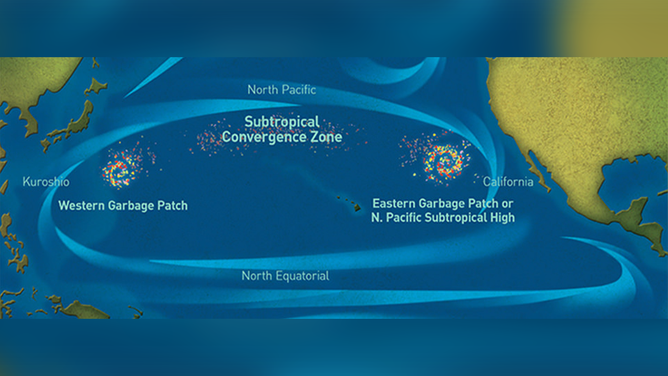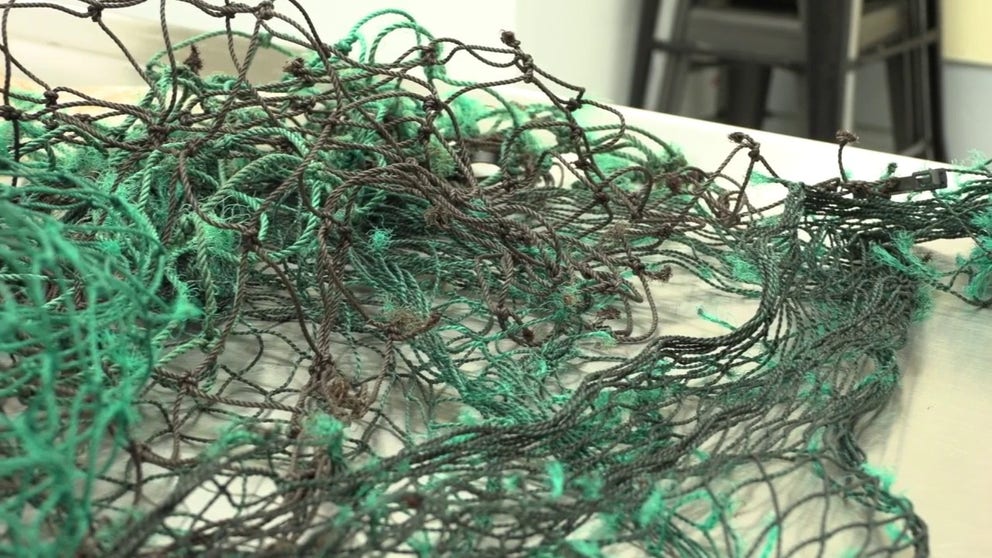Great Pacific Garbage Patch now thriving with marine life, study says
According to The Ocean Cleanup, the Great Pacific Garbage Patch covers an estimated surface area of about 620,000 square miles, an area twice the size of Texas or three times the size of France.
Ocean Conservancy seeks to clean world's shores from harmful plastic pollution
The Ocean Conservancy's International Coastal Cleanup is taking place Saturday. Volunteers are being called to service to clean the world's shores from harmful plastic pollution. And their impact is obvious with the numbers over the years. The ICC has mobilized more than 17 million volunteers to remove nearly 350 million pounds of trash from our waters. Dr. Anja Brandon, a U.S. plastics policy analyst at Ocean Conservancy, joins FOX Weather.
Dozens of different species of marine life that were once believed to have only thrived in coastal habitats have been found living among massive piles of plastic and debris swirling in the Pacific Ocean, according to a new study published in the Nature Ecology & Evolution journal on Monday.
Researchers studying the Great Pacific Garbage Patch said they found coastal species such as crabs and anemones on more than 70% of the debris samples collected in the ocean between November 2018 and January 2019.
Plastics and other debris found in whale carcass
Marine debris, ingested by a 56-foot-long sperm whale, is believed to be a contributing cause to its death off the coast of Hawaii. (Hawaii Department of Land and Natural Resources)
And these findings now suggest that the plastic and debris spinning in the Pacific may be enabling new floating ecosystems for marine life.
"Our results demonstrate that the oceanic environment and floating plastic habitat are clearly hospitable to coastal species," the study’s authors wrote. "Coastal species with an array of life history traits can survive, reproduce and have complex population and community structures in the open ocean."
Researchers identified 484 marine invertebrate organisms found among the debris, which accounted for 46 different species. Of those 46 different species, 80% have usually been found in coastal habitats, according to the study.
The authors of the study added that the Great Pacific Garbage Patch may now provide "extraordinary new opportunities for coastal species to expand populations into the open ocean and become a permanent part of the pelagic community, fundamentally altering the oceanic communities and ecosystem processes in this environment with potential implications for shifts in species dispersal and biogeography at broad spatial scales."
VIDEO SHOWS MOTHER WHALE ENTANGLED IN ROPE OFF GEORGIA'S COAST
What is the Great Pacific Garbage Patch?

While "Great Pacific Garbage Patch" is a term often used by the media, it does not paint an accurate picture of the marine debris problem in the North Pacific Ocean. Marine debris concentrates in various regions of the North Pacific, not just in one area. The exact size, content and location of the "garbage patches" are difficult to accurately predict.
(NOAA)
According to The Ocean Cleanup, the Great Pacific Garbage Patch covers an estimated surface area of about 620,000 square miles, an area twice the size of Texas or three times the size of France.
Scientists conducted the most elaborate sampling method ever coordinated to get that number. They consisted of a fleet of 62 boats, 652 surface nets and two flights over the patch to gather aerial images of the debris.
A gyre binds together the floating piles of plastic and debris.
According to NOAA’s National Ocean Service (NOS), a gyre is an extensive system of rotating ocean currents driven by wind, tides, differences in temperature and the salinity of the ocean.
Those currents pull the plastic and trash toward the center and trap it there.
HERE'S WHY SCIENTISTS ARE WORRIED ABOUT NEWLY DISCOVERED UNDERWATER HEAT WAVES

FILE - Plastic Water Bottle Floating in Pacific Ocean, Santa Monica, California.
(Citizen of the Planet / Education Images / Universal Images Group / Getty Images)
However, the NOS says the term Great Pacific Garbage Patch has led many people to believe that the plastic and other debris areas act like an island that should be visible to the naked eye.
But that’s not the case.
"While higher concentrations of litter items can be found in this area, much of the debris is small pieces of floating plastic that are not immediately evident to the naked eye," the NOS said.
Since the gyre is driven by things such as tide, it’s possible to sail through a pile of plastic and garbage in the Pacific Ocean and see very little or no debris on the water.

